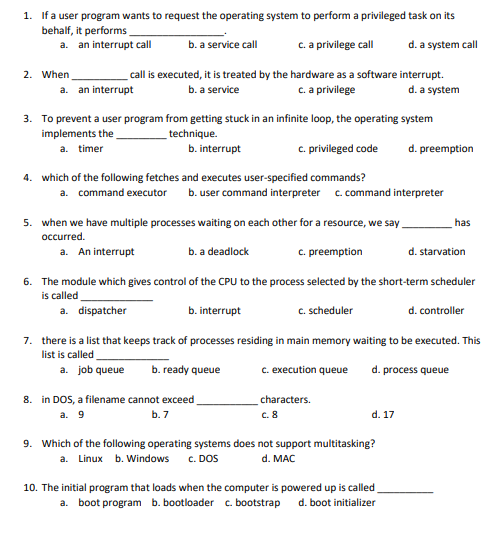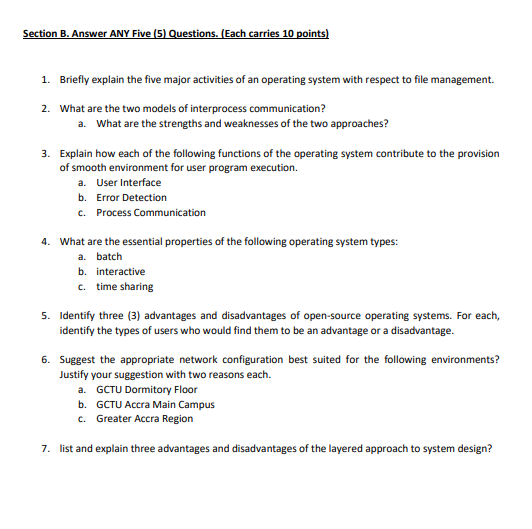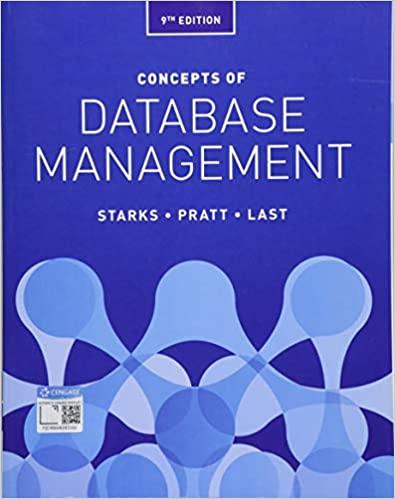

1. If a user program wants to request the operating system to perform a privileged task on its behalf, it performs a. an interrupt call b. a service call c. a privilege call d. a system call 2. When call is executed, it is treated by the hardware as a software interrupt. a. an interrupt b. a service c. a privilege d. a system 3. To prevent a user program from getting stuck in an infinite loop, the operating system implements the technique. a. timer b. interrupt C. privileged code d. preemption 4. which of the following fetches and executes user-specified commands? a. command executor b. user command interpreter c. command interpreter has 5. when we have multiple processes waiting on each other for a resource, we say occurred. a. An interrupt b. a deadlock C. preemption d. starvation 6. The module which gives control of the CPU to the process selected by the short-term scheduler is called a. dispatcher b. interrupt C. Scheduler d. controller 7. there is a list that keeps track of processes residing in main memory waiting to be executed. This list is called a. job queue b. ready queue C. execution queue d. process queue 8. in DOS, a filename cannot exceed a. 9 b.7 characters. C. 8 d. 17 9. Which of the following operating systems does not support multitasking? a. Linux b. Windows C. DOS d. MAC 10. The initial program that loads when the computer is powered up is called a. boot program b. bootloader c. bootstrap d. boot initializer Section B. Answer ANY Five (5) Questions. (Each carries 10 points) 1. Briefly explain the five major activities of an operating system with respect to file management. 2. What are the two models of interprocess communication? a. What are the strengths and weaknesses of the two approaches? 3. Explain how each of the following functions of the operating system contribute to the provision of smooth environment for user program execution. a. User Interface b. Error Detection c. Process Communication 4. What are the essential properties of the following operating system types: a. batch b. interactive c. time sharing 5. Identify three (3) advantages and disadvantages of open-source operating systems. For each, identify the types of users who would find them to be an advantage or a disadvantage. 6. Suggest the appropriate network configuration best suited for the following environments? Justify your suggestion with two reasons each. a. GCTU Dormitory Floor b. GCTU Accra Main Campus c. Greater Accra Region 7. list and explain three advantages and disadvantages of the layered approach to system design








